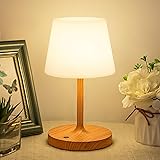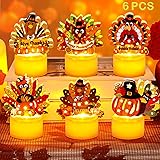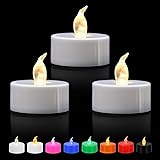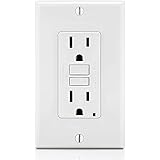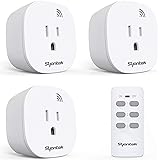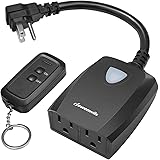Navigating the expansive landscape of smart home technology can be a complex endeavor, particularly when seeking optimal performance and integration within the Apple HomeKit ecosystem. While countless peripherals promise seamless operation, not all deliver on their potential. In fact, comprehensive testing of numerous HomeKit smart plugs reveals a significant divergence in reliability, feature sets, and overall user experience, directly impacting the efficacy of a smart home setup. As highlighted in the accompanying video, the selection of the right smart plug can profoundly influence everything from automation responsiveness to energy consumption insights, making an informed choice paramount for discerning users.
For HomeKit enthusiasts, the decision extends beyond mere on/off functionality; it encompasses critical factors such as network protocol compatibility, energy monitoring capabilities, and physical design. Understanding these nuances is crucial for building a robust and efficient smart home. This detailed analysis, expanding on the insights shared in the video, delves into specific models, shedding light on why certain HomeKit smart plugs might be best avoided, while others present compelling value propositions for diverse applications. We will explore the technical specifications and real-world performance of both commendable and less-than-ideal options, providing a comprehensive guide to enhance your HomeKit experience.
HomeKit Smart Plugs to Reconsider for Your Smart Home
The market for HomeKit smart plugs is saturated, yet not every product lives up to its promise, especially concerning advanced features and consistent performance. Our assessment, aligning with the video’s findings, identifies specific models that, despite their initial appeal, may introduce unforeseen challenges into a HomeKit environment. Understanding these potential pitfalls is key to avoiding frustration and ensuring a stable smart home infrastructure.
Belkin Wemo Smart Plug with Thread: A Closer Look at Connectivity Nuances
The Belkin Wemo smart plug, equipped with Thread technology, initially appears to be a promising contender, offering NFC for streamlined setup and exclusive HomeKit compatibility, thereby eliminating the need for third-party applications. This approach simplifies management, as all settings and updates are handled directly within the Apple Home app, a convenience many users appreciate. However, a significant omission is the absence of energy monitoring, a feature increasingly vital for optimizing power consumption and identifying energy-hungry devices in a smart home.
Furthermore, while Thread is touted for its enhanced reliability and faster response times, the Belkin Wemo’s implementation warrants closer scrutiny. This device operates as a Thread router rather than a border router, necessitating the presence of a HomePod mini or a newer Apple TV to fully leverage its Thread capabilities. Without a compatible border router, the smart plug reverts to a less reliable Bluetooth connection, undermining the very benefit Thread aims to provide. Anecdotal evidence, including observations over a week of varied room placement, indicates that response times often fail to surpass those of non-Thread devices like Meross or TP-Link, even once a Thread connection is established. While individual experiences can vary—some users report significant connection instability—the lack of consistent, superior performance compared to established Wi-Fi or older HomeKit solutions raises questions about its overall value proposition, particularly for users prioritizing steadfast connectivity.
Leviton HomeKit Smart Plug: Evaluating Feature Density and Value
Leviton’s entry into the HomeKit smart plug market, while new, positions itself similarly to established smart switch brands like Lutron. This plug boasts broad compatibility across smart home assistants and operates without requiring a dedicated hub, which can be an attractive aspect for users seeking simplicity. Despite its solid performance in the Home app, characterized by quick response times and stable connections, it largely falls short on advanced features that have become standard in competitive offerings. The most notable absence is energy monitoring, a critical tool for those wishing to track device power usage and potentially reduce electricity bills.
Moreover, the physical footprint of the Leviton smart plug is considerably larger than many of its counterparts, potentially obstructing adjacent outlets on a wall or surge protector. While it does include a configurable LED indicator and a physical switch—features that offer some utility—the overall lack of feature density at its price point positions it unfavorably against alternatives. When considering the cumulative value of functionality, size, and cost, numerous other smart plugs provide a more comprehensive package, ultimately offering superior “bang for your buck” within the HomeKit ecosystem.
Top HomeKit Smart Plugs to Enhance Your Smart Home
After evaluating options that present certain limitations, it’s essential to highlight the HomeKit smart plugs that truly excel in performance, features, and value. The following selections represent robust solutions for diverse user needs, from budget-conscious energy monitoring to specialized network extensions, providing reliable integration and advanced capabilities within your Apple Home environment.
TP-Link Kasa Smart Plug: The Pinnacle of Budget-Friendly Energy Monitoring
TP-Link, a long-standing player in networking hardware, has recently introduced its first HomeKit-compatible smart plug under the Kasa brand, and it has quickly garnered significant appreciation. This plug distinguishes itself by not requiring an additional hub, connecting directly to your Wi-Fi network for seamless integration. Its compact design is a notable advantage, allowing multiple units to be stacked on a single outlet or power strip without interference, a practical consideration for managing numerous devices.
A standout feature of the TP-Link Kasa smart plug is its robust energy monitoring capability, performing comparably to premium options like Eve Energy but at approximately half the cost. While the detailed energy data, including consumption patterns and historical usage, is exclusively accessible within the intuitive Kasa app, its clarity and comprehensive layout are impressive, even without graphical representations found in some competitors. Coupled with rock-solid connectivity and rapid response times in the Home app, the Kasa smart plug is an exceptional choice for users prioritizing energy insights and reliability without a premium price tag, particularly when purchased in multi-packs.
SwitchBot Smart Plug: NFC Innovation with Comprehensive Features
SwitchBot’s recent foray into HomeKit-enabled smart plugs introduces another compelling option, supporting all major smart home platforms without the need for a separate hub. This device mirrors the energy monitoring capabilities of both Eve and TP-Link, providing detailed consumption graphs within the SwitchBot app that offer valuable insights into power usage over time. Furthermore, the ability to deactivate the front-facing LED light enhances its suitability for bedrooms or other light-sensitive environments, contributing to improved user comfort.
A distinctive innovation of the SwitchBot smart plug is its integration of NFC tag control, theoretically allowing users to toggle power states with a simple tap. While this feature holds considerable promise for creating dynamic, location-based automations, initial reports, including personal testing, have indicated challenges with specific NFC tags, sometimes displaying “tag memory insufficient” errors. Despite these initial hiccups with NFC, the smart plug delivers consistently fast responses and stable connectivity within the Apple Home app, proving to be a reliable component for essential smart home automations. This blend of features, including comprehensive energy monitoring and forward-thinking NFC capabilities, positions SwitchBot as a strong contender in the HomeKit smart plug market.
Aqara Smart Plug: Zigbee Mesh and Enhanced Automation Potential
Aqara’s smart plug, while often positioned at a higher price point, offers a unique value proposition, particularly for users invested in the broader Aqara ecosystem. Its reliance on the Zigbee protocol facilitates exceptionally fast response times, often surpassing those achieved by Thread-enabled devices due to the inherent efficiency of mesh networking. This performance, however, necessitates an Aqara hub, which acts as the central coordinator for all Aqara devices and serves as a Zigbee repeater, effectively strengthening the mesh network and enhancing the reliability of all connected peripherals.
Beyond speed, the Aqara smart plug provides granular energy monitoring data, presenting more detailed daily and weekly usage breakdowns than many competitors, fostering a deeper understanding of power consumption. The true strength of this plug, however, lies in its seamless integration with other Aqara sensors and devices, enabling sophisticated automations—for instance, triggering camera recordings when the plug is activated. A notable design consideration is its substantial size, which is approximately double that of other compact smart plugs, potentially occupying multiple outlets. Despite this physical footprint and a non-deactivatable blue indicator light, the robust Zigbee mesh capabilities and comprehensive automation potential make the Aqara smart plug an excellent investment for users committed to a comprehensive Aqara smart home infrastructure seeking extended range and unparalleled reliability.
Meross Smart Plug: Unrivaled Reliability and User-Centric Features
Meross has consistently proven itself as a cornerstone in the HomeKit smart plug arena, earning a reputation for reliability and budget-friendliness that positions it as a perennial favorite. These Wi-Fi-connected smart plugs do not require a hub, making them incredibly easy to deploy throughout a home, and their space-saving design ensures multiple units can be accommodated without issue. A key differentiator for Meross is its intuitive app functionality, particularly its unique scene creation for timed power-offs, a feature invaluable for specific automation needs such as automatically deactivating a night light for pets after a set duration.
While several brands offer similar timed shutdown features, Meross stands out by providing a live countdown timer directly within its app’s home screen, offering clear visibility when managing multiple concurrent timers. This level of user feedback significantly enhances the practical application of timed automations, a common daily occurrence for many users. Although Meross smart plugs do not incorporate energy monitoring, their exceptional stability, rapid responsiveness within the Apple Home app, and minimal incidence of connection issues—often resolved with a simple power cycle—underscore their superior performance. For users prioritizing unwavering reliability, a sleek design, and convenient app-based scene management over energy tracking, Meross smart plugs represent a top-tier, cost-effective solution for extending HomeKit functionality throughout the residence.


